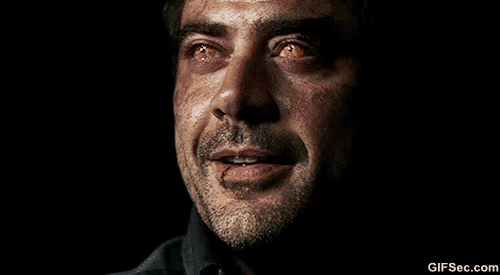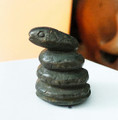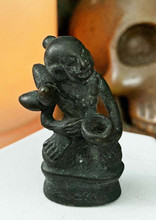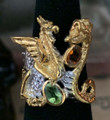 Loading... Please wait...
Loading... Please wait...- Home
- Voodoo Estate
- Lao Wat Mahathat, Mekapat Phra Upakut Bucha - A Main Séance and Reading Room Find - The Voodoo Estate - SOLD! -
- Home
- Thai Amulets
- Lao Wat Mahathat, Mekapat Phra Upakut Bucha - A Main Séance and Reading Room Find - The Voodoo Estate - SOLD! -
Lao Wat Mahathat, Mekapat Phra Upakut Bucha - A Main Séance and Reading Room Find - The Voodoo Estate - SOLD! -
Sorry but this item is currently unavailable.
Please check back at a later stage.
Product Description

SOLD!
~ Voodoo Priestess Estate ~ ©
Lao Wat Mahathat, Mekapat Phra Upakut Bucha
A Main Séance and Reading Room Find
~!~
This is another of our very long listings with an abundant text and 6 photographs, so please sit back and read the listing through.
If you have come this far, we feel you will find it was worth the wait.
It has now been just over twenty-three and a half years (12/06/2001) ago since we were called to do an estate that had been closed up for seventeen years!
~!~
The Voodoo Estate!
This type of call usually gets us excited as they are a treasure trove. Located here in Florida, there was no electricity or running water so we rigged our own lighting and in we went. If you have ever seen the Adams Family you will have some idea as to what we were greeted with! Then the attorney handling the liquidation gave us some background. The estate had belonged to an alleged powerful Voodoo Priestess/JooJoo Exorcist, grand daughter of a Marie Laveau, and favored daughter of a Marie Glapion.
These names meant nothing to us, but the late night talk of Voodoo and exorcism in the old mansion was enough for us to spend the night in a hotel and return in the morning to assess the estate. The rest is history.
Our research has shown that this woman was what she claimed and was indeed descended from a long line of well known Vodoun family originating in New Orleans in the early 1800's. We were pretty unnerved by this until we discovered they were also devout Catholics! Although I have to admit this was unlike any Catholic home we have ever been in and some of the items found inside were a little more than disturbing.
There was no feeling of dread or unwelcome in the mansion, however there was quite a bit of contraband and other items we can or will not sell here.
This is one of a few pieces from this estate we will be listing this week, so check our other listings!
We will, upon the new guardian's request, issue a named Letter of Authenticity with each lot from this estate, complying with the terms set forth to us by the estate's attorney.
~!~
Some Back Story
The Mekapat Phra Upakut Bucha shown and offered here is one of the items found and recovered from the antique carved jewelry casket (shown above and not part of this deal). It is one of three boxes recovered from a cabinet in the foyer lounge to her main séance and reading room. These rooms were a commercial endeavor that had a wealthy following and it is where many of the major séances of this estate were conducted. Many, if not all of her associates worked this room, conducting séances, card readings and numerous forms of divination for their clientele. Apparently this was a lucrative endeavor, as it remained active for over six decades. Her journals tell us they would load this box with items they felt they could sell at a premium, whether through enchantments they had placed on them or through an items history of its own.
Their journals list a host of well known psychics, mediums and other celebrities that would make guest appearances and that these events were booked to capacity well in advance.
They also tell us this Phra Upakut was brought to the estate by the GiJong Monk during his first 1966 visit and that it is one of thirty-four-unusual Thai artifacts he had brought to the estate as gifts for his friends,
The history of this Bucha, meant as an addition to a portable shrine, is part of a fascinating study of Southeast Asian Buddhism and its sorcerer monks. Their journals tell us this is one of a small group of religious items that were "procured by the GiJong Monk, from Ajarn Nong." There are no other details as to how he procured them, but the LiDiex journals do tell an interesting tale, as told to them by the GiJong monk concerning Wat Prasat and its amulets.
~!~

Wat Prasat
“This is as told to me by Wichian Vajiro and Ajarn Nong on the grounds of Wat Prasat. Both Monks had been involved with Archan Tim since his first dream contact with Luang Phor Thaud. This was Wat Khwid before Wat Prasat, a pilgrimage point of Luang Phor Thuad. The fire of B.E. 2498 (1955) destroyed or damaged every building save the monk’s residence. All were deeply struck at the loss. It was then that Luang Phor Thuad came to Archan Tim's dreams instructing him in the renovation of Wat Khwid. Archan Tim searched for the maker who had made the amulet pims of iron. It took him months to locate him, but together with him, and Phra Kru Smuh Amphol they created Phra Luang Phu Thuad amulets at Wat Prasat.
What is Thai Bucha?
It is the feeling of gratitude which incorporates the proper respect, compassion, and openness, which are at the heart of Thai culture and Buddhism. Thais worship Buddhist monks and Buddha images and pay respect to seniors. Showing this respect and gratitude is called bucha in the Thai language.
~!~
But Back to this Phra Upakut Bucha
The legends of the Arahat Upagutta can be found in Somdet Phra Maha Samana Chao Kroma Phra Paramanuchit Chinorasa’s Pathama sombodhi katha. Others are also mentioned in Kingkeo Attagara’s ‘The Folk Religion of Ban Nai’ and ‘The Legend and Cult of Upagupta’ by John S. Strong.
Many temples, in North Thailand, display a depiction of Phra Upakhut, also known as Phra Buakhem. His most common imagery is that of is an image of a sitting monk holding a begging bowl with his head turned upward to the right, while his left his hand holds the bowl and his right hand is slightly inside the bowl and covering it.
Phra Upakhut is a protector against evil and a symbol of purity.
The Origins of Phra Upakut
Our research revealed numerous origin myths pertaining to this monk. He was an arhat who was praised by the Buddha for his magical powers. Before the Buddha entered Nirvana, he asked Phra Upakhut to remain alive until the coming of the future Buddha, Maitreya, to protect the teachings of the Dhamma. Other sources tell us Phra Upakhut was a monk from the ancient city of Patna in India who lived after the Buddha during the reign of Emperor Ashoka (268-232 BC).
After Emperor Ashoka converted to Buddhism he started constructing numerous temples and stupas to house the relics of the Buddha. The devil threatened to interfere but Phra Upakhut thwarted him. He himself had reached the state of enlightenment and freedom from suffering. Theravada Buddhists believe the monk is alive and amongst us.
In another of his origin myths, Phra Upakut was conceived from a mermaid who had swallowed some of the Buddha’s semen that had come off his robes while he washed them in a river. It is a common known fact in Thailand, that if a mermaid drinks sperm she can get pregnant. We didn't know that.
This is an ancient recipe for material used to make sacred objects. It was made by alloying lead, LekLai, copper, cave minerals, herbs, mercury, silver, gold, etc. or any combination thereof. It is said to be holy material that once hardened into its permanent shape begins a maturing process of supernatural power. Already powerful at birth, it becomes stronger with age and these amulets are well known to protect one from bodily harm or mishaps.
~!~
This is assuredly a Khmer depiction as indicated by his oversized triple head penis slung over his shoulder. Another first for us and with no help from their journals our own research revealed this as a condition known as Triphallia (triple penis). Supernumerary penises is an extremely rare congenital anomaly. It affects one in every 5–6 million live births. Each case has a unique presentation and no cases are identical. The first case was recorded in 2020 in modern medical journals.
Periodically we encounter one of these estate items that just will not photograph, despite our best efforts. The six photographs shown below are the best of three photo sessions and bear little resemblance to the bucha.
The white dots that appear in the photos are a crystalline growth that we needed a loupe to see, yet they show prominently in the photographs. It is not bronze disease. Examination under a 10x loupe revealed it has a thick, hardened layer of soot, most likely caused by years of exposure to incense smoke in a close environment such as a cemetery monk's shack or a forest cave.
It is certainly an unusual Buddhist artifact with an extraordinary provenance that is much nicer than the photographs are able to depict.
~!~We have been contacted and visited by a number of people who were interested in the items from this estate since our first batch was listed. Among the buyers have been known psychics and practitioners. More than one, after adorning themselves or handling their purchase, stated, "this is a woman of power!" Many of our customers, after receiving items from this estate have reported dream contacts and other unexplained phenomenon. Unusual, authentic Voodoo Priestess Estate piece and at a bargain price!
This is truly a rare opportunity to own anything with attributes to this estate. The majority of this estate is now gone. Most of what we had left, and it was considerable, has been split up and sold to a couple of private, foreign collector practitioners and will never be available to the public again. We made the decision to do this as we have had some pretty strange visits from even stranger individuals and there have been enough unexplained phenomenon going on in the warehouse where her things were kept that many of our employees refused to go in there. The pieces offered and sold here are some of the few remaining pieces that will ever be offered to the public.
Nice addition to any collection, altar, wardrobe or decor, displays really well.
Really doesn't get any better than this.
There are 6 photographs below to tell the rest of this tale.
Buyer to pay $0.00 (free shipping) for Insured Ground Shipping with Tracking, handling and lagniappe.
Rest assured your order will be carefully packed to withstand the onslaught of the most deranged of parcel carriers.

International Buyer's, pleas email us for a shipping quote.
Payment is due at listing end.
Check our other items and sign up for our newsletter as new items are usually listed daily.
©Text and Photos Copyright 2001-2025 bushidobuce, all rights reserved.
Props are not part of the deal. But you knew that already.
~!~




















